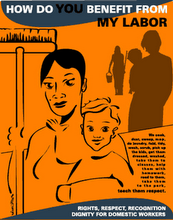The debate about ordinary people committing evil deeds rolls on. But in a personal viewpoint Prof Phil Zimbardo, creator of the Stanford Prison Experiment, says its time to get to grips with why wrongdoing happens.
In 1971 I became superintendent of the Stanford Prison, a mock prison run by psychologists. I was a young psychology professor at Stanford University, and I wanted to understand what happens when you put good people in a bad place.
To do so, it was necessary to conduct a controlled experiment, so my graduate assistants and I selected college-student volunteers - normal, healthy young men with no history of crime or violence - and randomly assigned them the roles of prisoner or guard.
During the extended experiment, we would observe and record everything that happened. The inmates would live in their cells and the prison yard 24/7 - the guards would work eight-hour shifts.
Our simulation tried to create a psychology of imprisonment in the minds of all participants, with all-powerful guards dominating powerless prisoners. To increase the real-life feel, we arranged for actual mass arrests and booking by the Palo Alto police; visits by a prison chaplain, a public defender, and parents; even parole board hearings.
Though not part of the plan, there were also prisoner rebellions. And, notoriously, there was chilling abuse and torture by the guards.
The experiment was supposed to last two weeks, but we had to pull the plug after only six days because nearly half the prisoners had emotional breakdowns in response to the extreme stress and psychological torments invented by their guards - good, young men who'd been overwhelmed by situational forces in the roles they were playing.
'Shocking' images
Fast-forward to April 2004. Horrific images flash across our television screens - nightmarish abuses of Iraqi prisoners by young American soldiers, the male and female military police reservists stationed at Abu Ghraib. Military commanders condemn the criminal actions of a "few bad apples," asserting that such abuses are not systemic in our military prisons.
The images were shocking to me, but not unfamiliar. They were, in fact, strikingly similar to what I had seen at Stanford - prisoners naked, bags over their heads, forced into sexually humiliating poses. Could the perpetrators of these evils be like the young men in my prison - "good apples" who happened to find themselves in a "bad barrel"? Though not part of the plan, there were also prisoner rebellions. And, notoriously, there was chilling abuse and torture by the guards.
The images were shocking to me, but not unfamiliar. They were, in fact, strikingly similar to what I had seen at Stanford - prisoners naked, bags over their heads, forced into sexually humiliating poses. Could the perpetrators of these evils be like the young men in my prison - "good apples" who happened to find themselves in a "bad barrel"?
Was their behaviour shaped by the same sort of social psychological forces that had operated in the Stanford Prison Experiment? My conclusion, after becoming an expert witness for one of the military policemen and reviewing all the evidence of the investigations into these abuses, was that the parallels were palpable. Indeed, one investigative report highlighted the fact that the "landmark Stanford study" should have been a cautionary tale in preventing the Abu Ghraib abuses.
Historical inquiry and behavioural science have demonstrated the "banality of evil" - the fact that, given certain conditions, ordinary people can succumb to social pressure to commit acts that would otherwise be unthinkable.
To be sure, few of us will ever end up as inmates or guards in military or civilian or mock prisons, but many of us find ourselves in relationships where we dominate other people or are dominated by them.
We spend our lives in institutions of one kind or another, from families, schools, and businesses, to homes for the elderly. And many times we bow to the will of the group even when it conflicts with our values.
Prejudiced beliefs
In the prisons at Stanford and Abu Ghraib, men and women did terrible things to other people in part because responsibility for their actions was diffused, rather than focused on each of them as individuals; we find ourselves in a similar situation whenever we witness someone else's trouble but fail to help because we assume others will.
Likewise, the prisoners at Stanford and Abu Ghraib suffered unnecessarily because the guards regarded them as less than human; dehumanisation allowed the guards to treat prisoners as lower beings. The same applies to us when we allow members of a minority group to be derogated as inferior.
Prejudiced beliefs lead to discrimination, and in turn to abuse. Situational forces affect us when we're acting in the capacity of a role we've assumed; when rules govern our behaviour; when we're in uniforms or dressed in ways that conceal our identity; and of course when we're in a group whose acceptance seems vital to our self-image.
We want to believe that we are "good," moral, and self-aware. We want to believe that we're different from "bad" or "evil" people. Thinking so is essential to maintaining a sense of personal dignity and self worth. But the line between good and evil is permeable, like the cell walls of our body that allow movement of chemicals across their boundaries.
Anything that any human being has ever done - anything imaginable - is potentially doable by any of us in the same situation.
This is not to excuse immoral behaviour; the point is simply that understanding how someone could have engaged in wrongdoing, rather than dismissing it as a bad deed done by a bad person, allows us to identify corrosive social forces - the very same forces we need to counteract if we want to avoid going down the same wrong path.
Prof Zimbardo is author of the Lucifer Effect - How Good People Turn Evil.
skip to main |
skip to sidebar

















Blog Archive
-
▼
2007
(540)
-
▼
April
(79)
- Posters/Affiches: Tamil, Español, Français, Englis...
- LEBANON: Open Skies of Struggle
- African illegals attack Spanish patrol boat with p...
- Next target chosen, Mohawks warn
- Blockade of eastern Ont. rail line ends; protester...
- Immigrants Used to Justify a Homeland Security Pol...
- Virginia Tech Shooting: A Race and Media Analysis
- No way to treat a guest worker
- Company defends move to import Chinese workers
- Des conditions de liberté de Mohammed Harkat assou...
- CHARKAOUI: LE SCRS DEVRAIT ÊTRE INTERROGÉ CONCERNA...
- CHARKAOUI: CSIS SHOULD BE QUESTIONED ABOUT RESSAM ...
- Charkaoui fou de joie
- Ressam blanchit Charkaoui
- Le Pen urges halt to immigration
- French Muslim graves desecrated
- Why do ordinary people commit evil deeds?
- Australia and US to swap refugees
- Détention aux États-Unis: Un réfugié demande une e...
- Que. guard fired after insisting on wearing hijab
- Group mulls human rights case over FIFA ruling
- Quebec firm on hijab ban for prison guard
- Hijab uproar
- Hijab a safety risk, Que. taekwondo team told
- What May Come: Asian Americans and the Virginia Te...
- In Pictures: Mohamed Harkat's Odyssey
- Photos: Supreme Court Case Against Security Certif...
- Video: The Supreme Court Case Against Security Cer...
- Mohamed Harkat: His every move is carefully watched
- Judge frees 'senior' terrorism suspect
- Terrorism suspect freed from Kingston prison
- UN urges help for Iraqi refugees
- Girls' team barred from competing in annual Tae Kw...
- L'attente d'Abdelkader Belaouni
- Demandeurs d'asile: les Églises, dernier refuge
- Bataille politique pour la Section d'appel
- New Publication: Undocumented Migrants
- Family demands answers in 2005 slaying
- Homme abattu par la police: la famille réclame une...
- Spies and Us
- Students left in fear of deportation
- Reports: Migrant Workers Rights
- No stowaways on board ship, Day confirms
- Aucun clandestin à bord du Cala Puebla
- Stop deportations, Tamils plead
- Another victim of Sept. 11
- Migrant workers hold LA protest
- Guantanamo force-feeds detainees
- Khawaja débouté
- Security tight as ship enters Halifax harbour
- Sarkozy in clash over immigration
- Multi-ethnic Marseille demands jobs
- Canadian's terror appeal denied
- Refugees 'living in limbo for years'
- "No Olympics on stolen Native land"
- Piquet de solidarité: JUSTICE POUR ANAS!
- PART 2 & 3: What does security and policing mean t...
- Le projet de loi C-280 sur la Section d’appel des ...
- Le profilage racial des réfugiés et des immigrants...
- La Loi antiterroriste et les certificats de sécuri...
- Spies at work CSIS: questioning of Canadian Muslim...
- An undocumented life
- Top court rejects Guantanamo test
- Inside Guantanamo Bay
- Guantanamo conditions 'worsening'
- U.S. Challenged on Immigrant Women's Legal Limbo
- The Racist War On Immigrants
- Criminalizing Solidarity: Sami al-Arian and the Wa...
- American Kangaroo Court Claims Its First Victim
- Native Reference will not Appear in Canadian Terro...
- JOURNEE DE SOLIDARITE AVEC ABDELKADER BELAOUNI
- Control Freaks:"Homeland Security" and "Interopera...
- Over 100 Haitian migrants land on Florida beach
- Senegalese mothers fund do-or-die migrant voyages
- meanwhile at the borders...
- Tricked and Exploited?
- Refugee fee called 'a mean barrier'
- The surprising price of freedom
- Labour Double-Standards Blamed for Farmworkers' De...
-
▼
April
(79)


Qui sommes nous:
Solidarité sans frontières est un réseau basé à Montréal qui lutte en faveur de la justice et de la dignité pour tou-te-s les sans-statut. Nous sommes un regroupement de migrant-e-s, d'immigrant-e-s, réfugié-e-s et leurs allié-e-s. Nous mobilisons pour toutes ceux et celles qui se battent contre la déportation, la détention et les certificats de sécurité.
About us:
Solidarity Across Borders is a Montreal-based network of migrants, immigrants, refugees, and allies engaged in the struggle for justice and dignity for migrants and refugees. We mobilize for all who are caught in the immigration regime and for all who fight against deportations, detentions, and security certificates.


Labels:
- War on Terrorism/Guerre contre le terrorisme (81)
- Fortress North America (64)
- Secret Trials/Proces Secret (58)
- Exploitation: Immigrant Workers/Travailleurs-EUSES immigrantEs (45)
- Migrant Resistance (37)
- Sanctuaire/Sanctuary (35)
- Detention (31)
- "Reasonable" Accomodation (30)
- Deportation (29)
- Fortress Europe (26)
- Racism (22)
- Indigenous Resistance (15)
- Propaganda (14)
- Police Harrasment/Harcelement policiere (10)
- Racial Profiling/Profilage Racial (10)
- Guantanamo (6)
- Anti-racism/Contre le racisme (4)
- Palestian Refugees/RéfugiéEs PalestinienNEs (4)
- Solidarity Across Borders (4)
- Solidarité sans frontières (4)
- Don't Ask Don't Tell (3)
- unionization/syndicalisation (3)
- Guantanamo North (2)
- LGBTQ (2)
- Labour (2)
- People's Commission (2)
- Police State/Etat policier (2)
- White Supremacy (2)
- Women (2)
- Raids (1)


Info:
(514) 848-7583
sansfrontieres[at]resist.ca
www.solidarityacrossborders.org

Contributors


Links:




